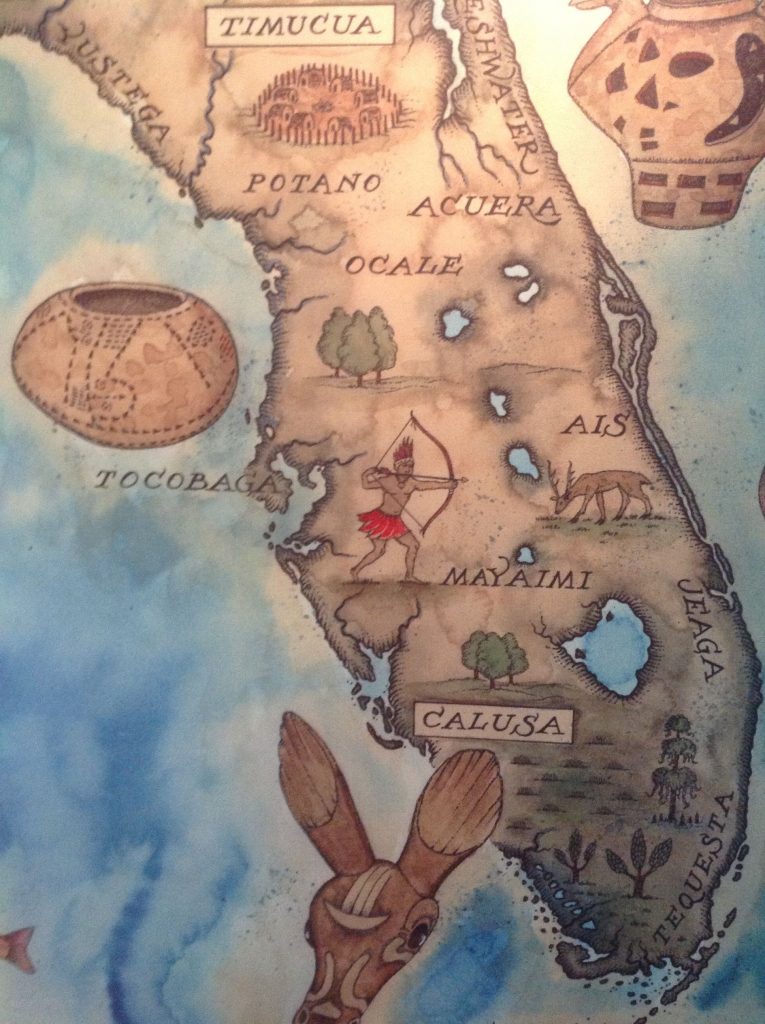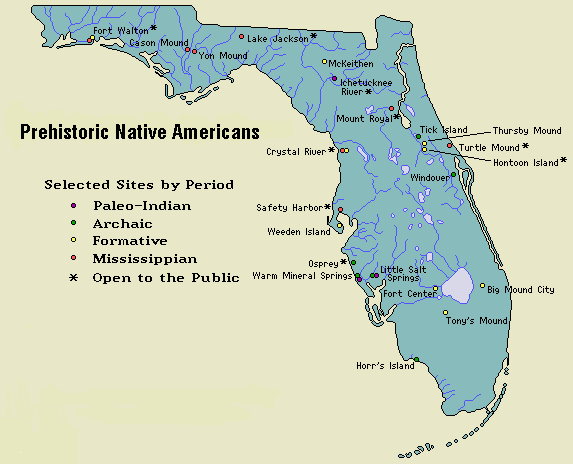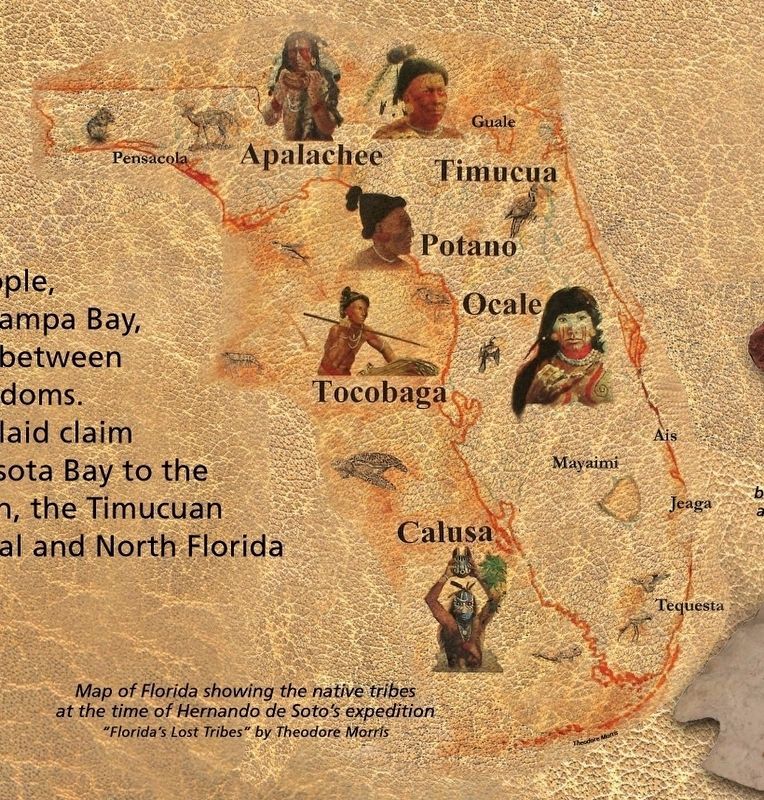Guardians of the Sunshine State: Exploring the Rich History and Culture of Florida’s Native Tribes
Guardians of the Sunshine State: Exploring the Rich History and Culture of Florida’s Native Tribes

Florida, the Sunshine State, is renowned for its vibrant beaches, diverse ecosystems, and thriving tourism industry. However, beneath the surface of its modern-day allure lies a rich and ancient history woven by the indigenous people who have called this land home for millennia. The story of Florida’s Native tribes is one of resilience, adaptation, and cultural richness that continues to shape the state’s identity.
A Tapestry of Tribes:
Related Articles: Guardians of the Sunshine State: Exploring the Rich History and Culture of Florida’s Native Tribes
- Uncover the Timeless Tales of the Chippewa Tribe
- Discover the Ultimate Guide to Thanksgiving on BBC: Recipes, History, and More!
- Unveiling the Secrets of Native American Facial Harmony
- Unveiling the Rich Heritage and Wealth of Wisconsin’s Native American Tribes
- Awaken the Sacred Spirit: Discover the Essence of Sacrec Pipe Offering
Florida’s indigenous tapestry is woven from a multitude of tribes, each with unique traditions, languages, and stories. The Seminole Tribe, the most well-known, is a relatively recent arrival, having formed in the 18th century from a fusion of different Creek groups fleeing persecution in the Southeast. However, the state was once home to numerous other tribes, including the Calusa, Timucua, Apalachee, and Tequesta, each with its own distinct history and cultural legacy.
The Calusa: Masters of the Shell Mound:
The Calusa, renowned for their mastery of the coastal environment, dominated Southwest Florida for centuries. Their name, meaning "wild people," reflects their fierce independence and adaptability. They were skilled fishermen, navigators, and artisans, utilizing the abundant resources of the Gulf Coast. Their impressive shell mounds, towering structures built from millions of shells, stand as testament to their ingenuity and cultural significance. These mounds served as burial grounds, ceremonial sites, and even platforms for their homes.
The Timucua: Guardians of the Interior:
The Timucua, a linguistically diverse group, inhabited the central and northern regions of Florida. They were farmers, hunters, and skilled craftspeople. Their influence extended across the state, as evidenced by their language, which was adopted by many other tribes. The Timucua were known for their intricate pottery, woven baskets, and carved wooden figures. They also developed a complex social structure, with chiefs and councils governing their communities.
The Apalachee: Architects of the Mississippian Culture:
The Apalachee, who lived in the Panhandle region, were part of the Mississippian culture, a widespread civilization that thrived in the southeastern United States from around 800 to 1600 AD. They were known for their large, earthen mounds, which served as platforms for homes, temples, and ceremonial structures. The Apalachee were skilled farmers, cultivating maize, beans, and squash. They also engaged in trade with other tribes, exchanging goods like pottery, tools, and hides.
The Tequesta: Keepers of the Coastal Waters:

The Tequesta, who inhabited the southeastern portion of the state, were closely tied to the Atlantic Ocean. They were expert fishermen and navigators, relying on the bounty of the sea for their sustenance. They developed a unique system of canoe construction and were skilled at using tools made from bone, shell, and stone. The Tequesta were also known for their intricate shell jewelry and carvings.
European Encounters and the Struggle for Survival:
The arrival of Europeans in the 16th century marked a turning point in the history of Florida’s Native tribes. The Spanish conquistadors, seeking gold and land, clashed with the indigenous people, leading to conflict and displacement. The introduction of diseases like smallpox and measles devastated Native populations, contributing to their decline.
Resistance and Resilience:
Despite the hardships they faced, Florida’s Native tribes demonstrated remarkable resilience. The Seminole, in particular, fought fiercely against European encroachment, engaging in a series of wars known as the Seminole Wars. They used their knowledge of the terrain and their guerilla tactics to resist the advances of the U.S. Army. The Seminole Wars, lasting for decades, ultimately resulted in the forced removal of many Seminole to reservations in Oklahoma, but their spirit of resistance continues to inspire.

The Legacy of Florida’s Native Tribes:
The legacy of Florida’s Native tribes lives on in the state’s cultural landscape. Their names are etched in the geography, with places like Lake Okeechobee, Kissimmee River, and Tallahassee all deriving from indigenous languages. Their stories are preserved in oral traditions, archaeological sites, and museum exhibits.
Preservation and Recognition:
Today, the Seminole Tribe of Florida is the only federally recognized tribe in the state. They operate casinos, cultural centers, and businesses, contributing significantly to the state’s economy. They also work to preserve their language, traditions, and cultural heritage. Other tribal groups, such as the Miccosukee Tribe, are recognized by the state of Florida.
The Future of Florida’s Native Tribes:

The future of Florida’s Native tribes is intertwined with the future of the state itself. As Florida continues to grow and change, it’s essential to acknowledge and celebrate the contributions of its indigenous people. Protecting their cultural heritage, promoting their economic development, and ensuring their voices are heard are crucial steps towards building a more inclusive and equitable future for all Floridians.
FAQ about Native Tribes in Florida:
1. How many Native American tribes are there in Florida?
There are currently two federally recognized tribes in Florida: the Seminole Tribe of Florida and the Miccosukee Tribe of Indians of Florida. However, numerous other tribal groups have historically inhabited the state.
2. What is the largest Native American tribe in Florida?
The Seminole Tribe of Florida is the largest federally recognized tribe in the state, with a population of over 4,000 members.
3. Where are the Seminole reservations located in Florida?
The Seminole Tribe of Florida has seven reservations located in various parts of the state, including Hollywood, Brighton, Immokalee, Big Cypress, Tampa, and Fort Pierce.
4. What are some of the major cultural contributions of Florida’s Native tribes?
Florida’s Native tribes have made significant contributions to the state’s cultural landscape, including their languages, traditions, art forms, and knowledge of the environment. Their influence can be seen in place names, foodways, and even the state’s flora and fauna.
5. What are some of the challenges faced by Florida’s Native tribes today?
Florida’s Native tribes face a variety of challenges, including poverty, lack of access to healthcare, and the erosion of their cultural heritage. They also continue to grapple with the legacy of colonialism and the displacement of their ancestors.
6. What can I do to support Florida’s Native tribes?
You can support Florida’s Native tribes by learning about their history and culture, visiting their museums and cultural centers, and patronizing their businesses. You can also advocate for policies that protect their rights and promote their well-being.
7. Are there any Native American festivals or events in Florida?
Yes, there are numerous Native American festivals and events held throughout the year in Florida, including powwows, cultural demonstrations, and storytelling sessions. Check with local tribal organizations or tourism offices for information on upcoming events.
By acknowledging and celebrating the rich history and culture of Florida’s Native tribes, we can foster a deeper understanding and appreciation for the state’s diverse heritage. Their stories serve as a reminder that the Sunshine State is a land with a deep and enduring connection to its indigenous people.

Closure
Thus, we hope this article has provided valuable insights into Guardians of the Sunshine State: Exploring the Rich History and Culture of Florida’s Native Tribes. We thank you for taking the time to read this article. See you in our next article!